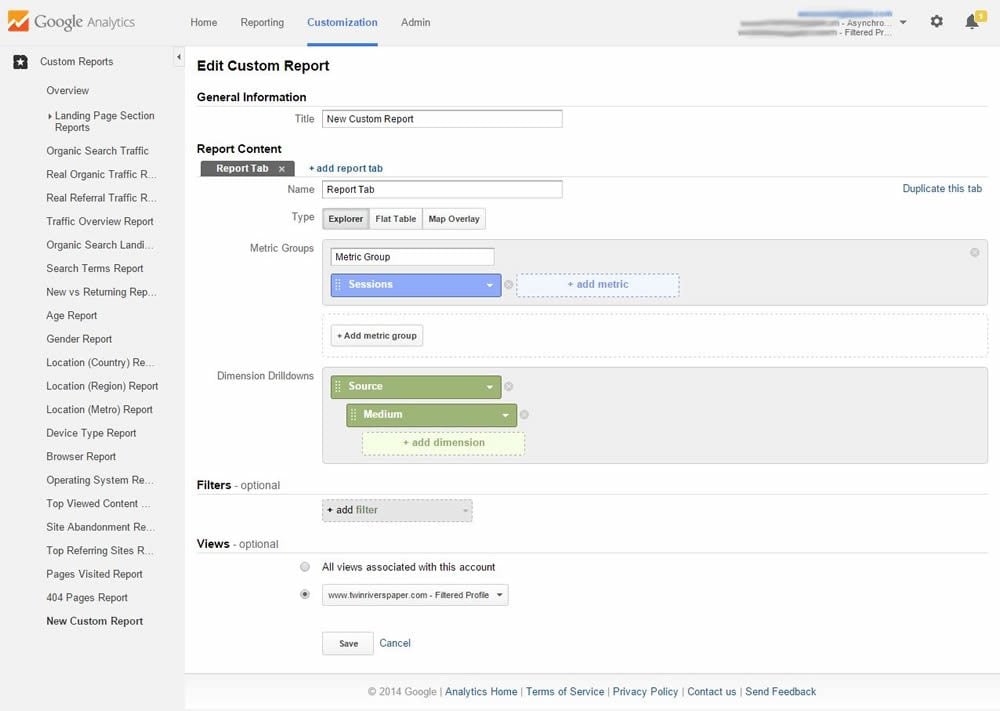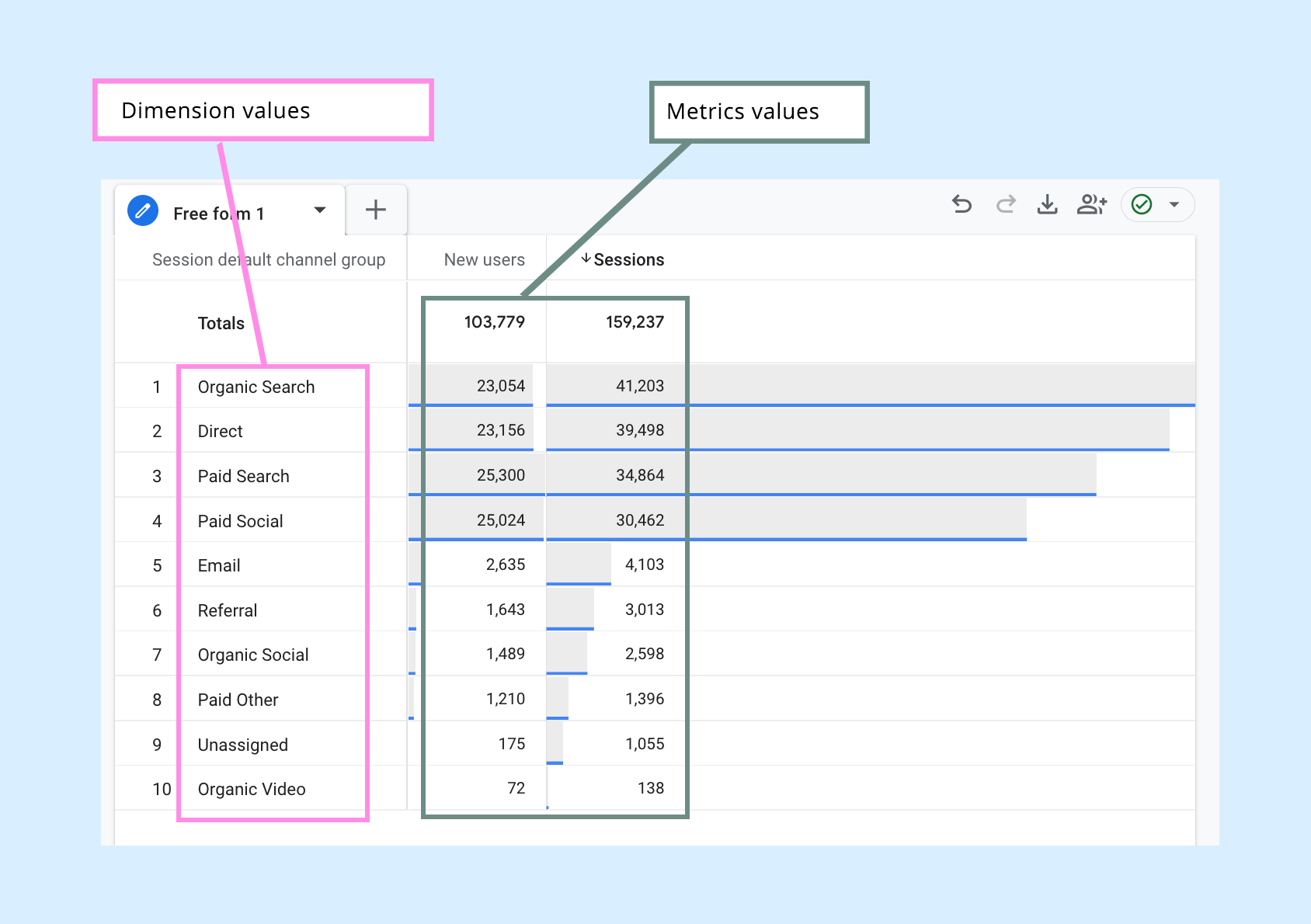A Comprehensive Guide to 'Secondary Dimensions' in Google Analytics: Insights Revealed
Wiki Article
Revealing the Intricacies of Second Dimension in Google Analytics: a Comprehensive Guide on Just How It Functions
Browsing the elaborate realm of second measurements in Google Analytics is a job that calls for an eager understanding of exactly how this function runs within the system. As digital landscapes progress and information ends up being significantly important for decision-making, grasping the nuances of secondary measurements can be the secret to opening valuable insights. From establishing records to diving into innovative methods, the trip to taking advantage of the power of second measurements is both rewarding and challenging. Join us as we explore the intricacies of this device and discover how it can change your information evaluation techniques.Fundamentals of Additional Dimension in Google Analytics
When evaluating information in Google Analytics, using the secondary dimension feature provides important understandings right into the performance of numerous metrics. The additional dimension allows individuals to further explore their data by including an additional layer of information to their main measurements. By doing so, analysts can gain an extra thorough understanding of the factors influencing their internet site's efficiency.In Google Analytics, the primary measurements represent the main groups of information, such as traffic sources or devices. When a secondary measurement is applied, it provides a much deeper level of granularity by showing an additional aspect of the data within the selected primary dimension. If the primary measurement is 'Web traffic Resource,' including a second measurement like 'Landing Web page' can reveal which details pages are driving traffic from each source.
This function is especially beneficial for identifying patterns, connections, and patterns that might not be quickly apparent when checking out the data from a solitary measurement. By leveraging the second dimension in Google Analytics, individuals can reveal valuable insights that can inform tactical decisions and optimizations to enhance site performance.
Establishing Secondary Measurement Reports
Broadening on the understandings gained through the application of secondary dimensions in Google Analytics, the procedure of establishing additional measurement reports involves configuring additional layers of information to better enhance the deepness of evaluation (what is a “secondary dimension” in google analytics?). To initiate this arrangement, individuals can navigate to the reporting section in Google Analytics and choose the main report they want to delve much deeper right into. When the key report is picked, customers can click on the "Secondary dimension" tab situated above the information visualization area. From there, a drop-down food selection will show up, offering a wide variety of options to pick the additional dimension that ideal enhances the key information collection. Users can select from a variety of secondary measurement metrics such as behavior, modern technology, web traffic sources, and more to get an extra detailed understanding of individual communications on their internet site. By integrating additional and main dimensions, services can draw out richer insights and make more educated choices to optimize their on-line existence efficiently.Leveraging Additional Dimensions for Insights
Utilizing second measurements in Google Analytics uses a calculated approach to drawing out nuanced insights for notified decision-making in online company optimization. By combining main measurements with additional measurements, businesses can dig much deeper into their information to discover important correlations and patterns that may not be quickly apparent. By segmenting website traffic by geographical location (primary measurement) and then adding a second measurement like tool classification, businesses can determine if specific areas prefer accessing the site through mobile or desktop computer.Furthermore, leveraging secondary measurements permits companies to get a better understanding of individual behavior and preferences. Assessing conversion rates based on web traffic sources (main dimension) along with the secondary dimension of touchdown web pages can disclose which certain pages are most effective in driving conversions for natural search website traffic versus social media traffic. These understandings can after that inform advertising and marketing techniques and web site optimization initiatives to improve overall efficiency and make the most of ROI.
Advanced Techniques for Second Dimensions
To additionally remove elaborate insights and enhance data-driven decision-making within Google Analytics, applying innovative methods for utilizing additional dimensions is essential in unlocking deeper layers of important information for business optimization. One sophisticated method is the use of customized measurements and metrics, permitting the tracking of particular customer communications or actions that are not recorded by default in Google Analytics. By carrying out and defining customized dimensions, organizations can tailor their monitoring to align with special business objectives and objectives.An additional innovative method includes making read this use of filters in combination with secondary dimensions. Filters allow users to fine-tune the information presented in Google Analytics records, supplying even more targeted and pertinent insights. By applying filters tactically with additional dimensions, businesses can segment information better, bring about a more clear understanding of user actions and efficiency metrics.

Optimizing Data Analysis With Secondary Dimensions

Furthermore, optimizing data analysis with additional measurements includes explore different mixes to identify patterns and relationships that may not be immediately obvious. This iterative approach allows analysts to adjust their coverage and focus on one of the most appropriate data factors for their business objectives. Ultimately, by leveraging second dimensions efficiently, experts can improve the precision and performance of their information analysis efforts in Google Analytics.
Final Thought
To conclude, understanding the ins and outs of secondary measurements in Google Analytics is important for obtaining deeper insights into web site performance. By establishing second her latest blog measurement records, leveraging them for understandings, and using advanced techniques, analysts can optimize data evaluation and make notified decisions. This extensive overview has supplied a comprehensive summary of how second dimensions job and their importance in improving the logical abilities of Google Analytics individuals.The second dimension allows customers to further explore their data by including an additional layer of details to their main measurements. When an additional measurement is applied, it gives a deeper degree of granularity by revealing one more element of the information within the chosen primary measurement.Expanding on the understandings obtained with the application of additional measurements in Google Analytics, the procedure of establishing up second dimension records includes setting up additional layers of data to even more enhance the depth of evaluation. By combining key measurements with secondary measurements, businesses can delve deeper right into their data to discover useful relationships and patterns that might not be quickly obvious. One means to enhance information evaluation with secondary dimensions is to integrate them with main measurements to obtain an extra extensive sight of internet site efficiency.
Report this wiki page